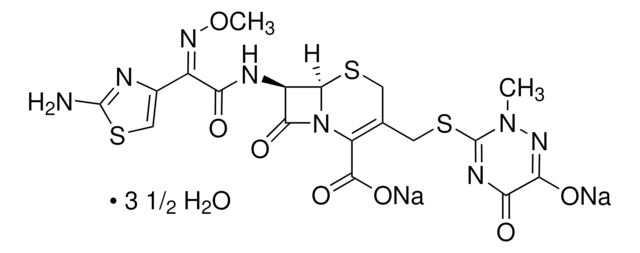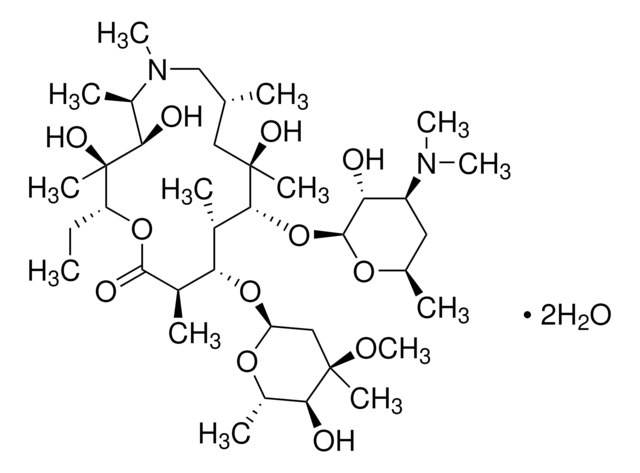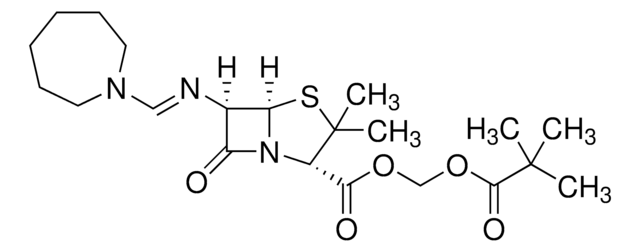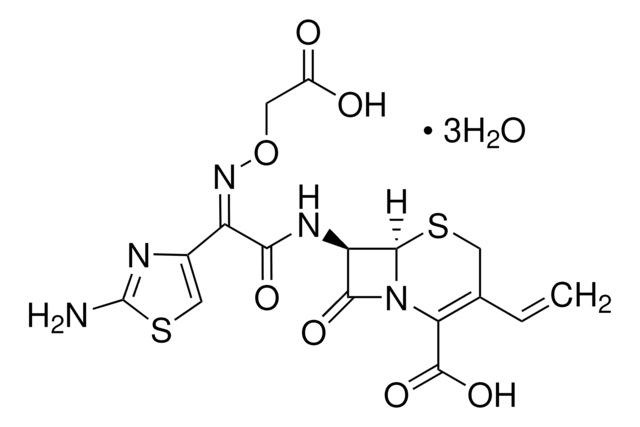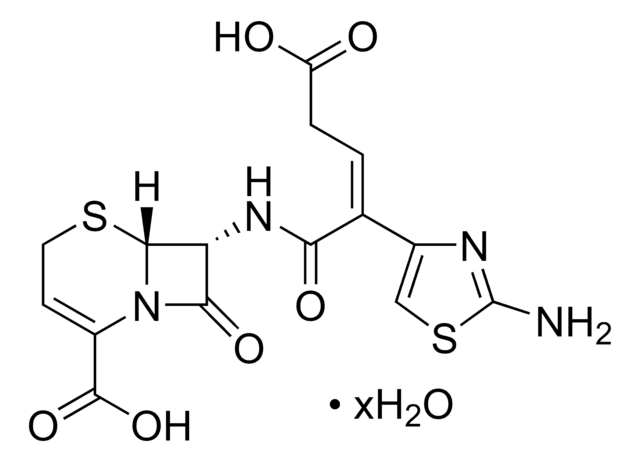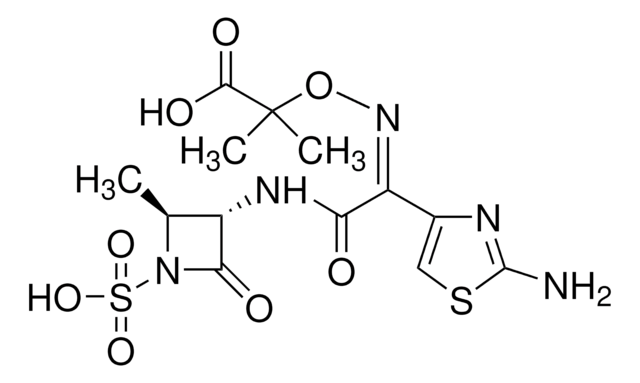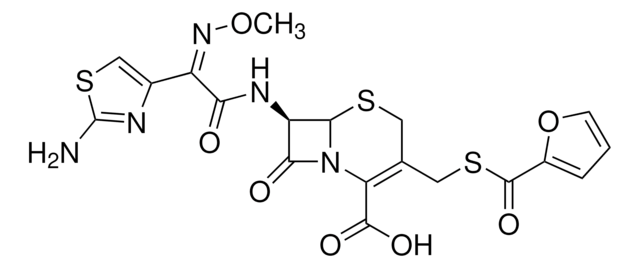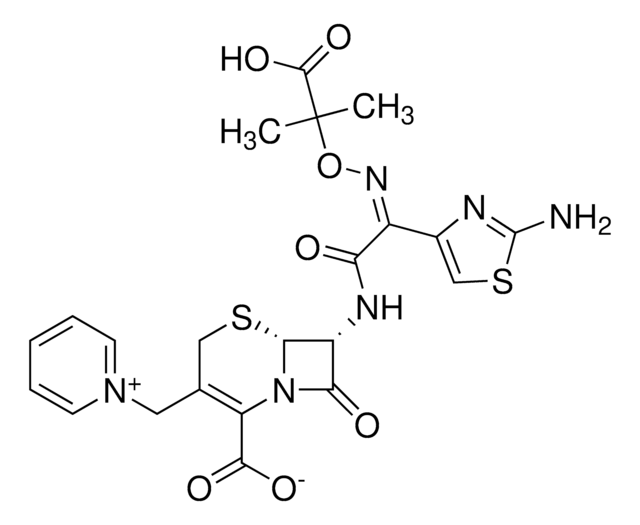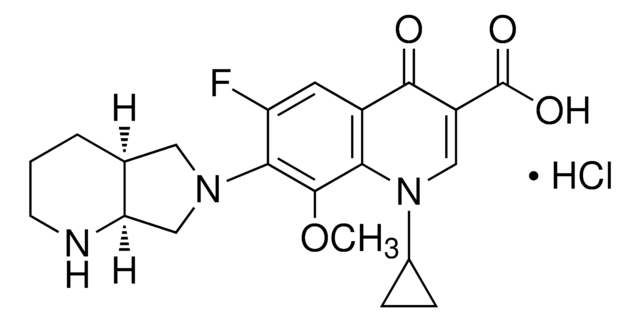32344
Cefpodoxim
VETRANAL®, analytical standard
Synonym(e):
(6R,7R)-7-{2-(2-Amino-4-thiazolyl)-2-[(Z)-methoxyimino]-acetamido}-3-(methoxymethyl)-3-cephem-4-carboxylat, Cefpodoxim freie Säure
About This Item
Empfohlene Produkte
Qualität
analytical standard
Qualitätsniveau
Produktlinie
VETRANAL®
Methode(n)
HPLC: suitable
gas chromatography (GC): suitable
Anwendung(en)
forensics and toxicology
veterinary
Format
neat
Lagertemp.
−20°C
SMILES String
O=C(/C(C1=CSC(N)=N1)=N\OC)N[C@H](C2=O)[C@]3([H])N2C(C(O)=O)=C(COC)CS3
InChI
1S/C15H17N5O6S2/c1-25-3-6-4-27-13-9(12(22)20(13)10(6)14(23)24)18-11(21)8(19-26-2)7-5-28-15(16)17-7/h5,9,13H,3-4H2,1-2H3,(H2,16,17)(H,18,21)(H,23,24)/b19-8-/t9-,13-/m1/s1
InChIKey
WYUSVOMTXWRGEK-HBWVYFAYSA-N
Verwandte Kategorien
Anwendung
Rechtliche Hinweise
Signalwort
Danger
H-Sätze
P-Sätze
Gefahreneinstufungen
Resp. Sens. 1 - Skin Sens. 1
Lagerklassenschlüssel
11 - Combustible Solids
WGK
WGK 3
Flammpunkt (°F)
Not applicable
Flammpunkt (°C)
Not applicable
Hier finden Sie alle aktuellen Versionen:
Besitzen Sie dieses Produkt bereits?
In der Dokumentenbibliothek finden Sie die Dokumentation zu den Produkten, die Sie kürzlich erworben haben.
Kunden haben sich ebenfalls angesehen
Unser Team von Wissenschaftlern verfügt über Erfahrung in allen Forschungsbereichen einschließlich Life Science, Materialwissenschaften, chemischer Synthese, Chromatographie, Analytik und vielen mehr..
Setzen Sie sich mit dem technischen Dienst in Verbindung.